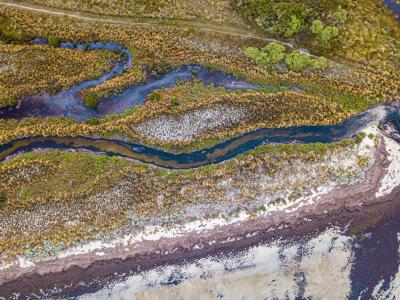Using Topological Relationships in Mesh-Independent River Network Representations
To model riverine processes in Earth system models, researchers use conceptual river networks that represent real-world river networks. Conceptual river network development methods must consider the different types of geometric meshes that Earth system models use to represent the land. Existing river network representation methods do not support unstructured meshes, limiting how riverine processes can interact with other hydrologic processes (e.g., storm surge). A newly developed river network representation model allows researchers to represent river networks in any mesh system, which can improve river modeling across scales.
To better understand the role of river systems, researchers need to represent river networks in a way that preserves their spatial patterns. New methods that represent river networks with accurate spatial patterns in any mesh system enable rivers and other hydrologic features to consistently interact regardless of scale. This research paves a way toward “coastal resolving” Earth system modeling, which is critical for understanding the effects of climate change on spatially complex coastal systems.
Improved modeling of the interactions between rivers and other hydrologic features in the Earth system requires flexible methods to represent the complex shapes of river networks. This often necessitates high-fidelity representation of river networks that remain true to their real-world counterparts independent of the model’s spatial scale.
PyFlowline is the first and, so far, only river network representation model that supports both structured and unstructured meshes. The topological relationship-based method within PyFlowline provides a novel approach to capturing river courses in any mesh system. Using PyFlowline, researchers produced the first sets of conceptual river networks on top of the unstructured Model for Prediction Across Scales mesh. This study provides a potential path toward advanced terrain analysis and fully coupled land-river-ocean Earth system model simulations under a unified mesh framework optimized for coastal environments.

